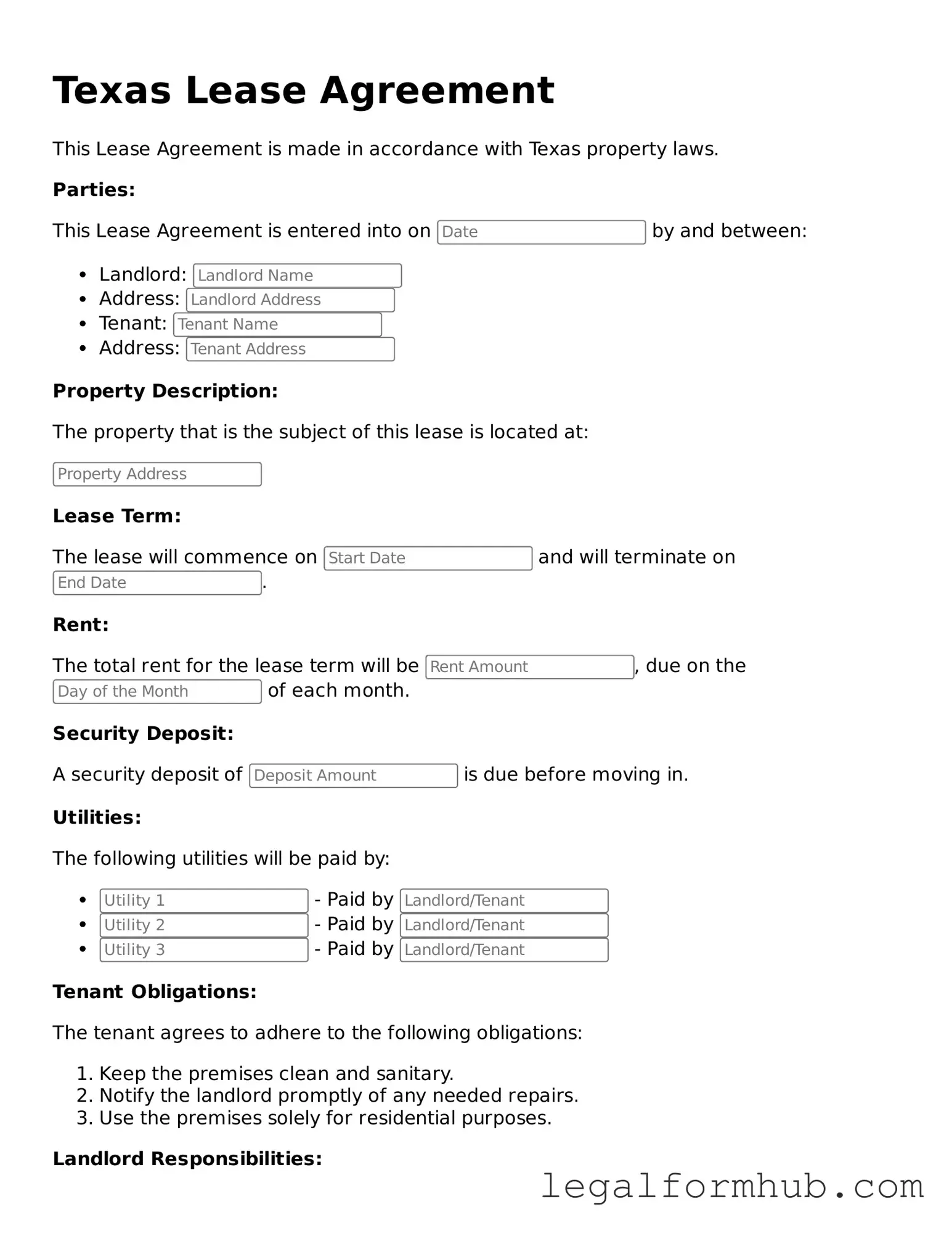The Texas Rental Application serves a similar purpose to the Texas Lease Agreement. Both documents are essential in the rental process, but they focus on different stages. The rental application is used to collect information from prospective tenants, such as employment history and creditworthiness. This information helps landlords make informed decisions about whom to rent to, while the lease agreement formalizes the rental terms once a tenant has been selected.
The Texas Month-to-Month Lease Agreement offers flexibility that can appeal to both landlords and tenants. Like the standard lease agreement, it outlines the terms of the rental arrangement, but it allows for shorter notice periods and does not require a long-term commitment. This document is ideal for those who may need to move on short notice or for landlords who want to maintain the option to adjust terms more frequently.
The Texas Commercial Lease Agreement is tailored for business purposes, unlike the residential lease. It includes provisions specific to commercial properties, such as zoning regulations and business hours. Both agreements establish the rights and responsibilities of the parties involved, but the commercial lease focuses on the operational needs of a business while ensuring compliance with local laws.
The Texas Sublease Agreement permits a tenant to rent out their leased property to another party. This document is similar to the lease agreement in that it outlines terms, conditions, and responsibilities. However, it also requires the original tenant to remain responsible to the landlord for the lease obligations, creating a layered relationship among the parties involved.
Understanding the details of the Ohio Articles of Incorporation form is vital for anyone planning to establish a corporation. This legal document not only sets forth the foundational aspects of the corporation but also serves as a formal declaration of its existence. For more information, consult our guide on "how to file the Articles of Incorporation" at how to file the Articles of Incorporation.
The Texas Lease Termination Letter is a document that serves as a formal notice to end a lease agreement. While the lease agreement establishes the terms of occupancy, the termination letter communicates the intent to vacate. Both documents are crucial in managing the rental relationship, as they ensure clarity and compliance with the agreed-upon terms.
The Texas Rent Increase Notice is another important document that relates to the lease agreement. It informs tenants of changes to the rental rate, typically requiring a specified notice period. Like the lease agreement, this notice must adhere to legal requirements to be enforceable, ensuring that both parties are aware of any financial changes during the lease term.
The Texas Security Deposit Agreement outlines the terms regarding the security deposit collected by the landlord. This document is similar to the lease agreement in that it details financial responsibilities and conditions under which the deposit may be withheld. Both agreements aim to protect the interests of both parties while ensuring compliance with state regulations.
The Texas Lease Addendum is an additional document that modifies or supplements the original lease agreement. It can address specific issues such as pet policies or maintenance responsibilities. Like the lease agreement, it must be agreed upon by both parties and signed to be enforceable, ensuring that all terms are clear and understood.
